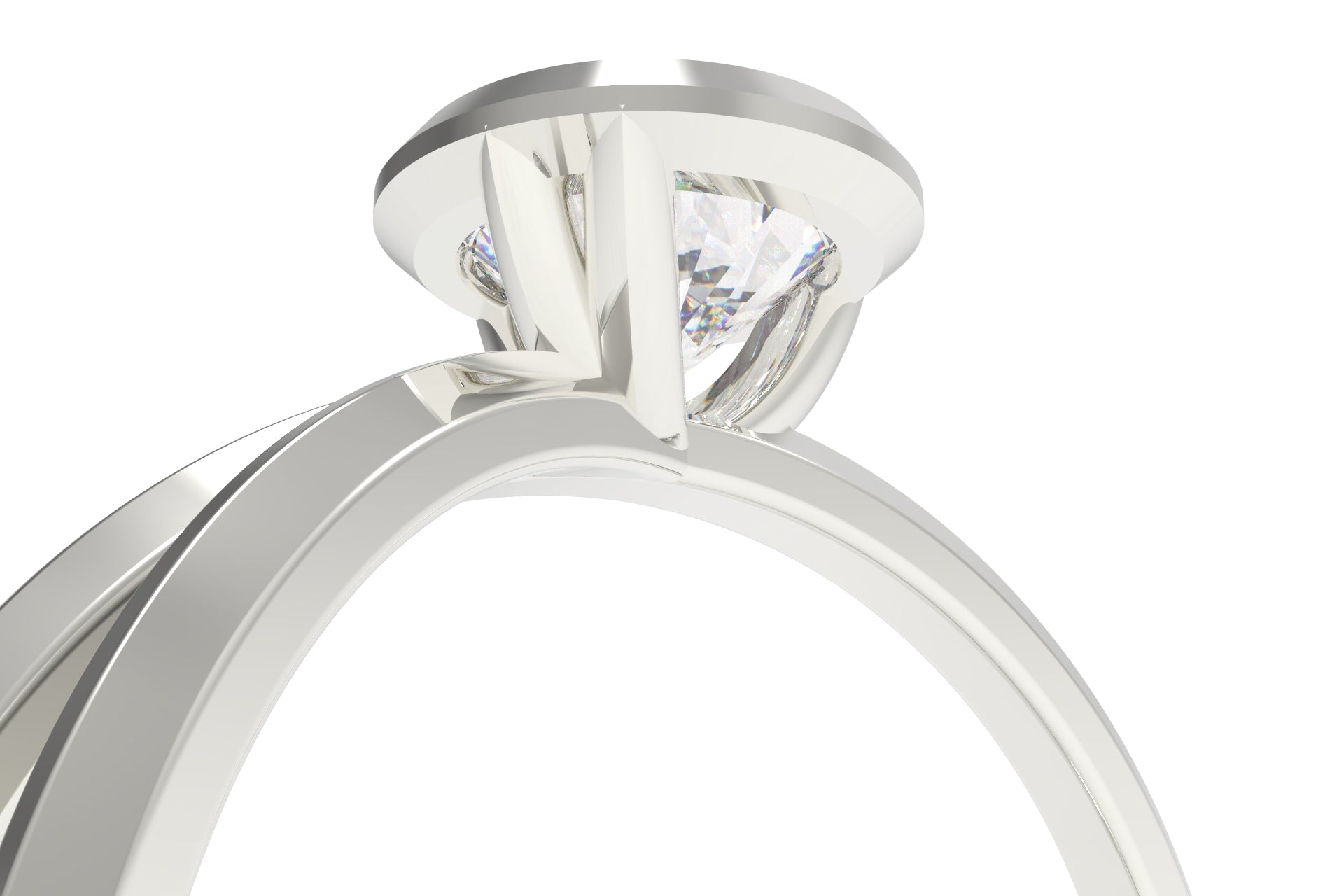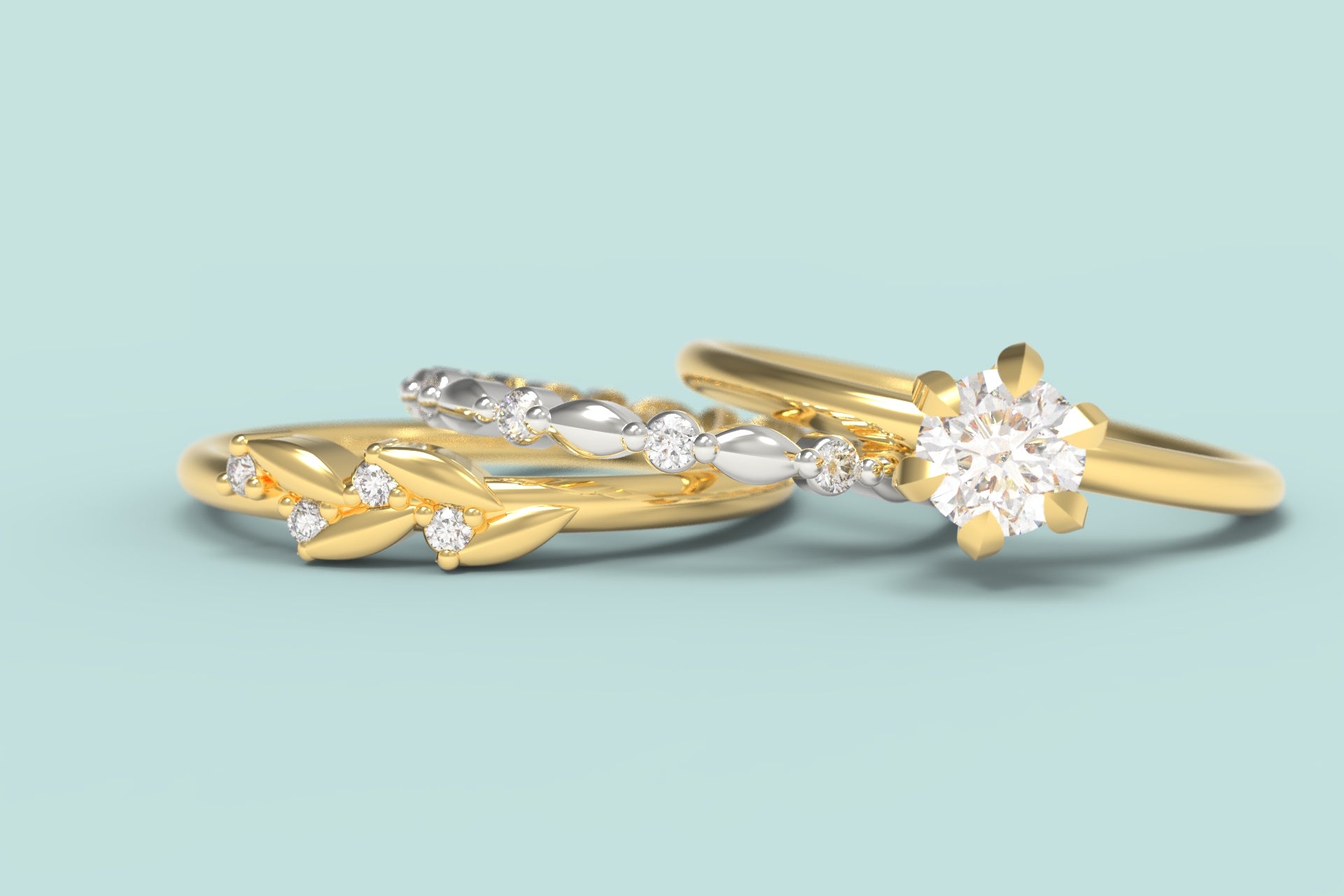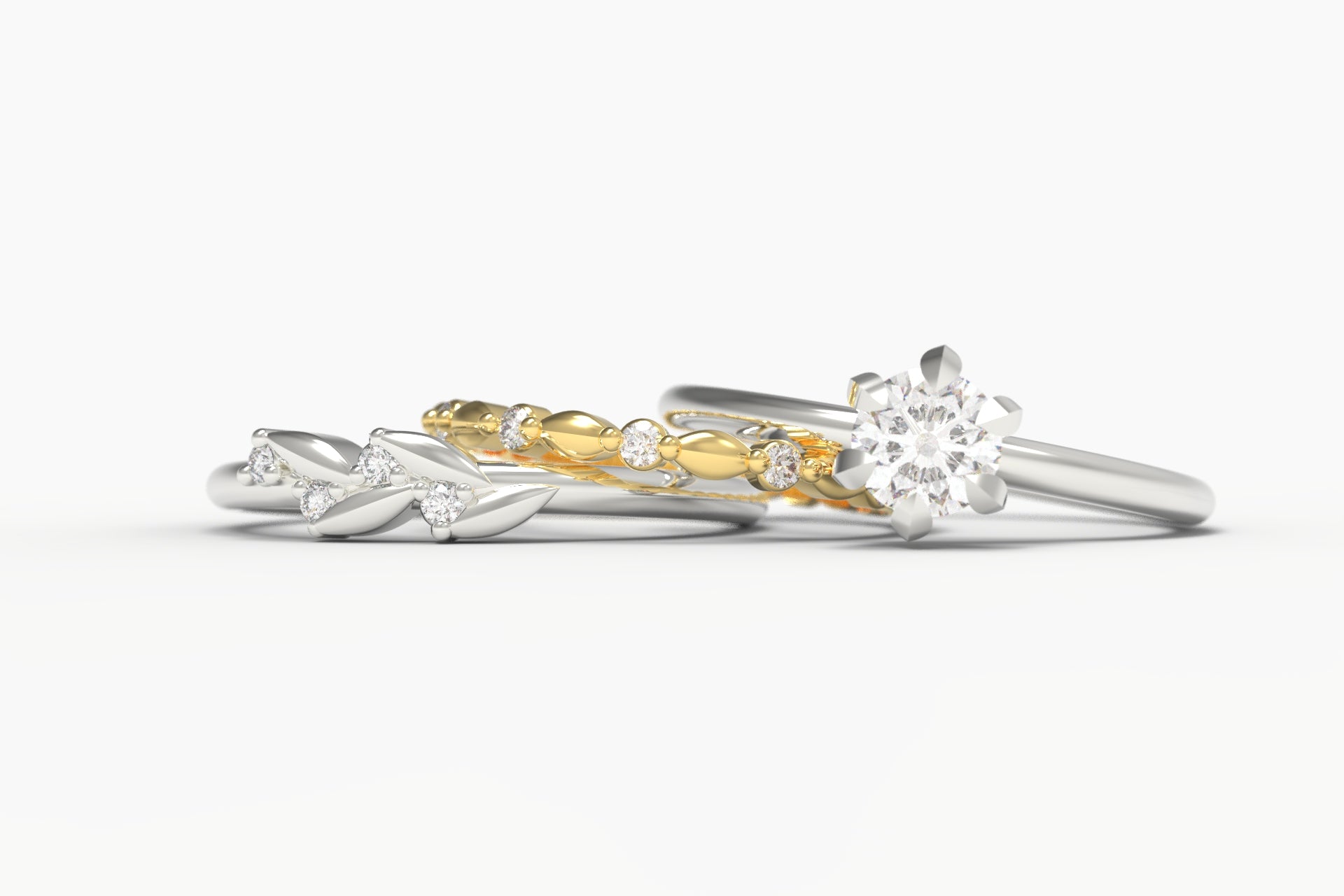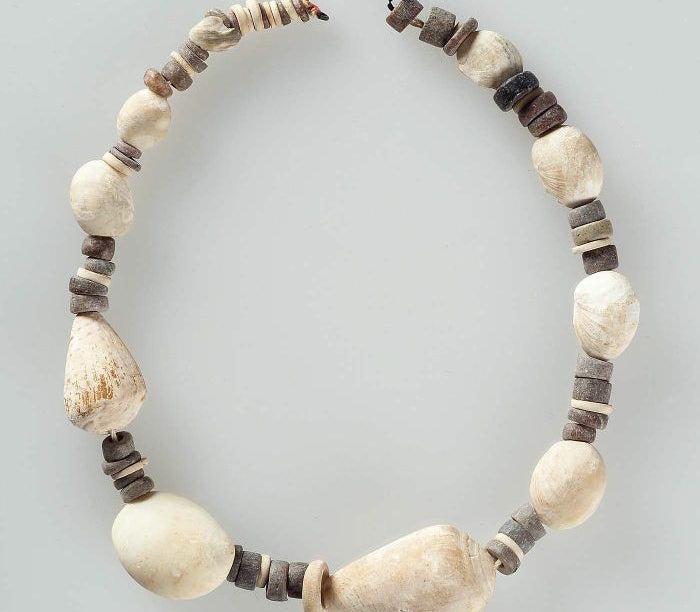
Written by Chayle Cook For NSCAD University seminar "Jewellery of Ancient Cultures" 2010.
... It is difficult to define and quantify the functions of pre-historic jewellery because there is no written record from the people of that time. It is difficult to know for sure what the intent and functions of jewellery in pre-historic times were. Objects found that date back to Paleolithic and Neolithic eras can be difficult to define as jewellery or not. For example, objects with holes carved through them are often categorized as beads and thought of as jewellery, but we don't know for sure how they were intended to be used, worn, and what their purpose was. We find lots of beads made from many kinds of materials, commonly shell, stone, bone, and teeth, but we can only guess why they were making them. We find beads, pendants, pins, and many types of tools (like needles, fish hooks, and axes) dating to pre-historic times. We also find carved sculptures and cave paintings. The imagery in these give us more insight into the values and practices of these Paleolithic and Neolithic people. For example, the stone carving “Venus of Willendorf” depicts a voluptuous female figure. Her features are exaggeratedly over weight, emphasizing her fertility and ample access to food. From this, we can guess that obesity was sought after as a sign of health and prosperity because this meant she had enough food and resources to take care of herself and to raise offspring. Carvings like this appear throughout pre-historic times, and we can guess that they must have been an important figure, possibly symbolizing fertility and bringing good fortune to their owners. We can only assume that beads and pendants found from this era, may have been worn for similar symbolic reasons. The use of shell beads, for example, have been compared to a vaginal shape, and some feminist historian believe that the shell beads we find may have been worn as a fertility symbol. We can make assumptions about the uses and purposes of jewellery in pre-historic cultures by making reference and comparing similarities to the functions of jewellery that we do understand from historic and contemporary times.
Why was it worn in life, for ritual or everyday use or only in burial? And Why was is made and worn at all?
... When viewing jewellery from ancient cultures, we are getting only a small glimpse into the values and ways of life of people and places that preceded our own experience. The objects that have been found are generally excavated from burial sites. This source is initially a biased insight into the life of a culture as we can only assume that there must be similarities to the jewellery of burials and those of everyday adornment. From this we can make comparisons and educated guesses on the uses of jewellery through other sources left by the culture, like literature, sculptures, and illustrated murals. We can also compare burial objects to those found outside of burials, which are few in ratio to those found in burials. We are then still left with the questions of jewellery's function in ancient cultures. Why was it worn in life, for ritual or everyday use or only in burial? And Why was is made and worn at all?
The desire for personal adornment is natural place for the concept of jewellery to evolve from.
... It would seem that, even before historic times, people have been trying to look better than each other and assert themselves through their appearance. The function of jewellery seems to foremost follow from this initial aspiration. We can see that jewellery begins with this desire for aesthetic beauty, which then relates to its use as a distinction of power or class. They are also initially seen as objects of worship and superstition, being used for protection and later in ritual of these conventions. Jewellery is also given as a celebratory gift or for honorary purposes. We see jewellery used for functional purposes like clothing fasteners or even traded as currency. In addition, contemporary jewellery is also made for the sake of art. Evidence of these functions of jewellery mingle throughout the eras, increasing and decreasing in popularity, but we can see them maintained even into our own present day functions of jewellery.
... The desire for personal adornment is natural place for the concept of jewellery to evolve from. Aesthetics, as we now call it, is a set of principles of how we appreciate and declare things beautiful. It is our guideline for style and good looks. We use jewellery as a way to bring beauty onto ourselves through beautiful things. We are attracted to things that are special, for example, shiny, eye catching, sparkly, or colourful. This instinct originates in our primitive scavenger/gatherer skills, where we are attracted to objects like berries that are good to eat and judge them by their brightness or plump roundest. Objects of jewellery like colourful stone beads are attractive to people in that same way. We can see the use of beads made from natural materials, like shell, stone, teeth, and bone, dating back to pre-historic times. It can be assumed that these objects were initially collected to be worn as a means to look beautiful. By taking the beautiful things in our surroundings and adding them to our own appearance we gather beauty onto ourselves. Jewellery adornment has not only been for aesthetics, but it is an elemental piece of our attraction and desire to obtain and wear it.

"An ancient Greek gold hair spiral ring, circa 7th Century BC"
... In cultures where we see jewellery being worn for other reasons than just aesthetics alone, we can loose sight of the initial importance of aesthetics because of other symbolic or mythological implications that the object also brings. Even as the emergence of jewellery for purposes other than aesthetics appear in ancient cultures, we can still find jewellery that functions mainly for aesthetics. To find aesthetic jewellery, we can look to jewellery that is non-representational and non-narrative. For example, Hair spirals are found from eras of ancient cultures, like in the Near East of Mesopatamia and in the Greek cultures of Aegean. Although these cultures both have rich narrative and mythology, these simple hair ring shapes are a reoccurring form that has been found. From the earliest eras it has been found in, it is seen as a simple round wire spiral with blunt or rounded ends. This spring like shape would be twisted into the hair to add a decorative element. Multitudes of these forms have been found, suggesting that they must have been popular to have, although we do no see many of them in our own culture today. The hair spiral remained mainly a simple form with few extras added for symbolism, but representational objects were later added. During Egyptian times animal heads and bodies were added to the ends of the spirals as additional decoration. Some of these figures may have also been representations of mythical creatures, and subsequently may have also been referential to a narrative rather than being solely for aesthetics.

"Gold boat-shaped earrings, Classical, 4th-3rd century BC, Etruscan"
... In Etruscan jewellery we can see them develop their love for extravagances in aesthetics. The main components of much their jewellery were highly decorated with granulation and filigree. The focus of this jewellery was on the aesthetics of being overwhelmed with shiny, textures and patterns. They found beauty in the repetition of fine line patterns of filigree and minutely small grains of granulation. For example, they were fond of making extravagant earrings, one style which was particularly suitable for this type of decoration was the “globule” style of earring. This type of earring was mainly made up of round gold spheres that would appear to dangle down from the ear in a upside down pyramid shape, with one ball at the bottom and subsequent rows above increasing in number. The overall look of these earrings was rich with gold and patterning. It's main feature was to look luscious and shiny and few additional elements were needed to create this effect. In our own culture today, we can see that aesthetics is a major part of the appeal for jewellery. For example, in the fashion magazines we often see ads for clothes and shoes accompanied by matching jewellery, suggesting that jewellery is needed to complete an outfit.
We are attracted to things that are special... This instinct originates in our primitive scavenger/gatherer skills, where we are attracted to objects like berries that are good to eat and judge them by their brightness or plump roundest.

"One of the richest and most impressive sets of Etruscan jewelry ever found. It comprises a splendid gold and glass pendant necklace, a pair of gold and rock-crystal."
... Jewellery can also reflect and signify other parts of the person who is wearing it. As jewellery is worn to show a person's status, there are other kinds of jewellery that are worn to show a person's beliefs. In Egyptian burials and in their living life mythological symbols were worn to ward off evil. The symbol of the Wadjet Eye was thought to be extremely protective against evil. This symbol would be carved from stone to make amulets, or could be a decorative element inlayed with enamel, or could also be made into a small bead for the everyday wearer. The Egyptians valued and believed in these symbols and the traditions of wearing them. Jewellery is worn in this way for superstitious reasons. It might be related to spiritual or religious reasons, or also to mythological or for luck based reasons. This symbolism is passed down from one generation to the next, and as it is passed down it becomes more important and cherished as tradition. This is also seen in Assyrian culture, with the use of the rosette. It is a rose shape with many layers of petals, and is seen on many of their arm bands, earrings, and in their hair. The rosette was a popular motif and is thought to have been a symbol of good luck. In today's culture, people also wear symbols of good luck for non-spiritual reasons, like a lucky rabbits foot, or a four-leaf clover. People also were copper medical bracelets in belief that they will cure illness, similar to Romans who believed wearing Amethyst stones would prevent drunkenness and thus allowed them self to drink more. The wearing of these kinds of jewellery is influenced by superstitious beliefs but is compounded by the tradition of there use.
This symbolism is passed down from one generation to the next, and as it is passed down it becomes more important and cherished as tradition.
... Traditions of jewellery are also related to the functions of celebration and ritual. This jewellery might be for a celebration of success, achievement, and honour of a person, or for a ceremony that celebrates a ritual event or anniversary. Objects from rituals, may include pieces that were not found in burial, or were found in temples. These items would appear to be too extravagant for everyday use, and may also portray a mythological symbol. For example, a hairnet found in the Hellenistic period in Egypt (200-150BCE) is made from large amounts of gold, with a medallion of the figure Maenad. This object is too cumbersome to be worn on an everyday basis, and because of the chased illustration on top, it is thought that this piece may have been worn for rituals only. Jewellery is also created in celebration of someone's success. To mark an honourable event or heroic actions made by someone, they are often bestowed with a metal. We can see this with the Roman's military metals and coins. Jewellery can also mark the coming of age. In Roman tradition, a child's jewellery was a pendant called a Bulla. When they came of age they no longer wore it. So in this case the act of not wearing a type a jewellery, marked the passing of childhood into manhood.
We can see that jewellery was given as a gift to say, “You are mine” or “I love you”...
... Jewellery is used as a memento, to mark an occasion, a vow, or a moment in time. Jewellery is given as gifts to friends and loved ones as a way of embodying a precious moment and treasuring a shared connection. For contemporary jewellers, wedding bands and engagement rings comprise at least 50% of their annual profits. It is the main piece of quality jewellery that a person of our era will purchase in their life, but with the divorce rate ever increasing it may not be their only one for long. Few wedding bands have been found in ancient cultures, but some have been found in the ancient Roman Empire dating back to the 2nd and 4th century BCE. On these types of rings the portrait of the bride and groom would be illustrated. It is difficult to distinguish all jewellery that was given as a gift in ancient times, as there may be no record of it being given rather than bought by the wearer. One way we can tell if it was a gift, is through inscriptions. For example, on a gold pin from Hellenistic Greece (2nd century BCE) we can see an inscription written on it, which reads “To the Paphian Aphrodite Eubola vowed this, the wife of Aratas, the kinsman and Tamisa”. We can also assume that most jewellery worn by women, was most likely not acquired by women, as men have typically been the leaders and the women the followers. For example, Walgrave writes that even in nature, “Animals use these natural decorative attributes as signals when it comes to power struggles or the instinct to mate... this is reason enough to state that wearing jewellery was originally a male affair,” and “In harems it is usual for a hierarchy [of women] to manifest itself through the jewellery the ruler bestows on the women.”(p23) With this we can see that jewellery was given as a gift to say, “you are mine” or “i love you”, and it displays this connection for other too see.
For contemporary jewellers, wedding bands and engagement rings comprise at least 50% of their annual profits.
... Jewellery can function in a utilitarian way, by being used as a clothing fastener, clasp, pin, or buckle. We see the use of the fibula style pin throughout ancient cultures. This type of pin, works similarly to the mechanism in a safety pin, with a spiral spring pin being held in by a closer. Fibulas could be very elaborately decorated for special dress, or could be simple for everyday use. We can see elaborate examples of fibulas from the Romans, where they become almost sculptural pieces with figures and patterning. Some of these fibulas are hardly recognizable because of the vast abouts of heavy decoration, and the pin mechanism is almost concealed. We can also look at the fibulas from the Celtic people in England, who cast fibula shapes from bronze. They also added decoration to their pins, but many of them retain the silhouette of a bow shaped fibula. Much of the jewellery for men that has been found is for a utilitarian function. We can see other types of jewellery for men like arm band, head pieces, etc. but is seems that a larger ratio of jewellery for men was for utility, like buckles, buttons, cloak pins, etc. For example when we compare Roman sculptures of men and women, the woman may wear earrings and necklaces, but the men will wear a cloak brooch. In contemporary jewellery we can see a similar trend in the function of male jewellery. Men are more likely to wear a decorative neck tie, cufflinks, or a over coat brooch. These things may all be decorative, but they still attach in a way that is useful.

"Pin (fibula) Greek, South Italian Early Hellenistic Period 320–280 B.C."
... Jewellery can also be useful as a piece of trade or currency. We can see jewellery being used like money is the case of dowries, where the bride's family will give the groom large sums of wealth, typically money and jewellery, as payment for taking the daughter off of their hands. In today's culture, we see a similar tradition with wedding gifts, where the couple's friends and family give them money and goods to start them off in their life together. Jewellery has been found from the Hallstatt era in Europe in large buried collections. It seems that these were non-religious and non-funerary, but were likely a hoard of wealth. Jewellery would have also been a bargaining piece used for trade and barter. When the appearance of money had not been developed yet, it is likely that jewellery would have been used as payment for goods and services. Seal rings were also worn by the Romans, and used as a signature of payment. They would have been used on a system of credit, like today's credit cards.
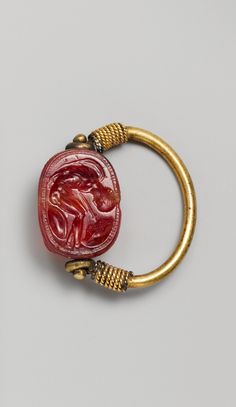
"Carnelian scarab Period: Late Classical. Date: early 4th century B.C. Culture: Etruscan"
The functions of jewellery throughout the eras have dealt with the common human desires for beauty, power, personal connection, superstitious protection, tradition, trade of wealth, utilitarian function, and for Art.
... Lastly, jewellery can also be made for the function of Art. This may relate more to contemporary jewellery than to the ancients, but it is important to note this development. Much jewellery in ancient cultures was highly decorated, and seems to focus more on the glamourous decoration than on the jewellery itself. This can be similar to the art jewellery of today, but it can also be argued that Art is not the same as the decorative arts. In this sense we can see that the art jewellery of today is not about the decoration of the piece of jewellery or about decorating the person, but it is about the object itself which may or may not be be worn. In the article “The Body and Jewellery”, the authors Helen W. Drutt English and Peter Dormer write about the connection of the function of the body in contemporary art jewellery. They write: “The body can be seen as a soft machine for displaying the art... or it can be ignored entirely if the goal is a gallery wall or showcase.”(p120) This emphasizes that jewellery does not have to mean or be anything more than art. In this article “The Body and Jewellery” the artist and goldsmith, David Watkins, relates jewellery to sculpture when he writes about his own art saing, “I drew directly on the forms of my earlier sculpture, but gradually moved towards objects... The miniaturized sculpture approach– rings where the shank or finger essentially formed a platform for a sculptural even, and brooches which were more or less framed relief constructions.”(p111) If the body and wearability is less important with this kind of jewellery, what does it say about the people that wear it? Those who pursue, purchase, and wear art jewellery are those that are looking for something unique, witty, and intellectual. By wearing one of a kind art jewellery the wearer is saying something about their taste. It goes back to the origins of the function of jewellery, aesthetics and class.

"David Watkins, Artist in Jewellery"
... The functions of jewellery throughout the eras have dealt with the common human desires for beauty, power, personal connection, superstitious protection, tradition, trade of wealth, utilitarian function, and for Art. We can evaluate and compare these functions through the findings of archeological excavations in burials, hoards, temples, and villages, but it is also useful to compare these findings to the other information we know about these cultures through literature, sculpture, and murals. Through this we have seen these functions increase and decrease in popularity, but they will remain as a common threads throughout the ages of jewellery.


